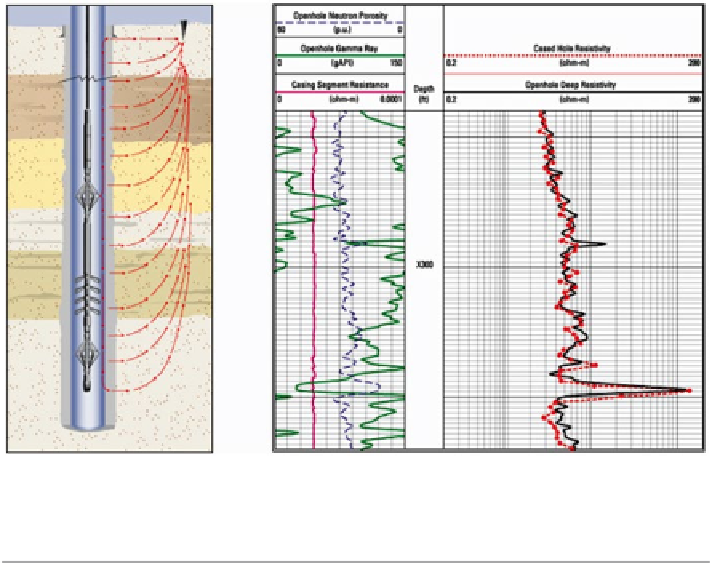Environmental Engineering Reference
In-Depth Information
Fig. 11.1
Measurement of formation resistivity through casing
The Gamma Ray Log
Gamma ray logs are used for four main purposes:
1. Correlation and depth positioning
2. Evaluation of the shale content of a formation
3. Mineral analysis
4. Monitoring of radioactive salts deposited on tubulars
The gamma ray log measures the natural gamma ray emissions from subsurface
formations. Since gamma rays can pass through steel casing, measurements can be
made in both open and cased holes. In other applications, induced gamma rays are
measured. These may be ʳ-rays of capture as used in pulsed neutron logging, or
ʳ-rays produced by inelastic neutron interaction with nuclei in the formation. These
latter are used to identify the formation elemental concentrations. These will be
discussed later in this chapter.
Figure
11.2
shows a typical gamma ray log. It is normally presented in Track 1
on a linear grid and is scaled in API units, which will be defined later. On this grid,
gamma ray activity increases from left to right. Modern gamma ray tools are in the
form of double-ended subs that can be sandwiched into practically any logging tool
string; thus, the gamma ray can be run with practically any tool available.

Search WWH ::

Custom Search